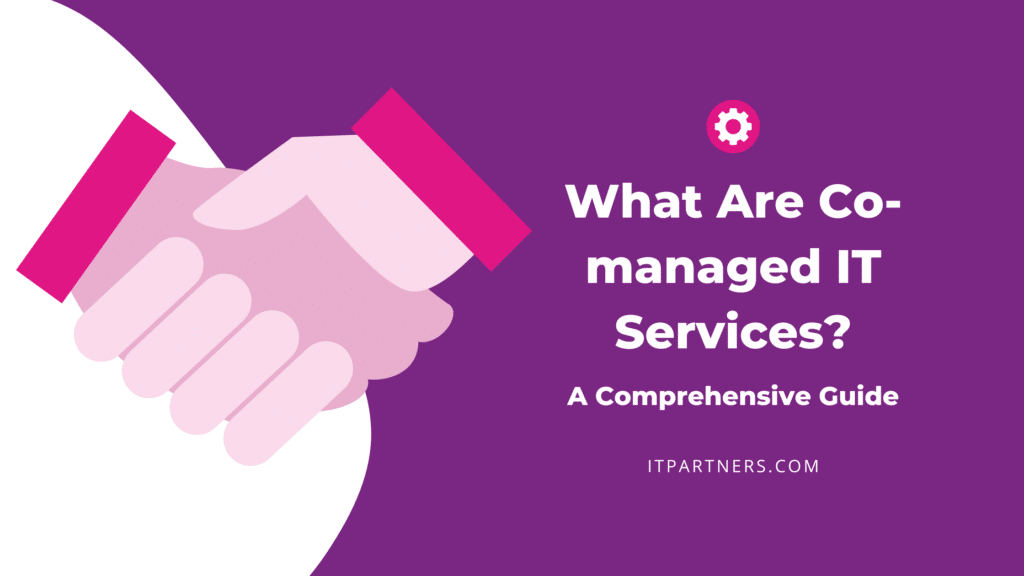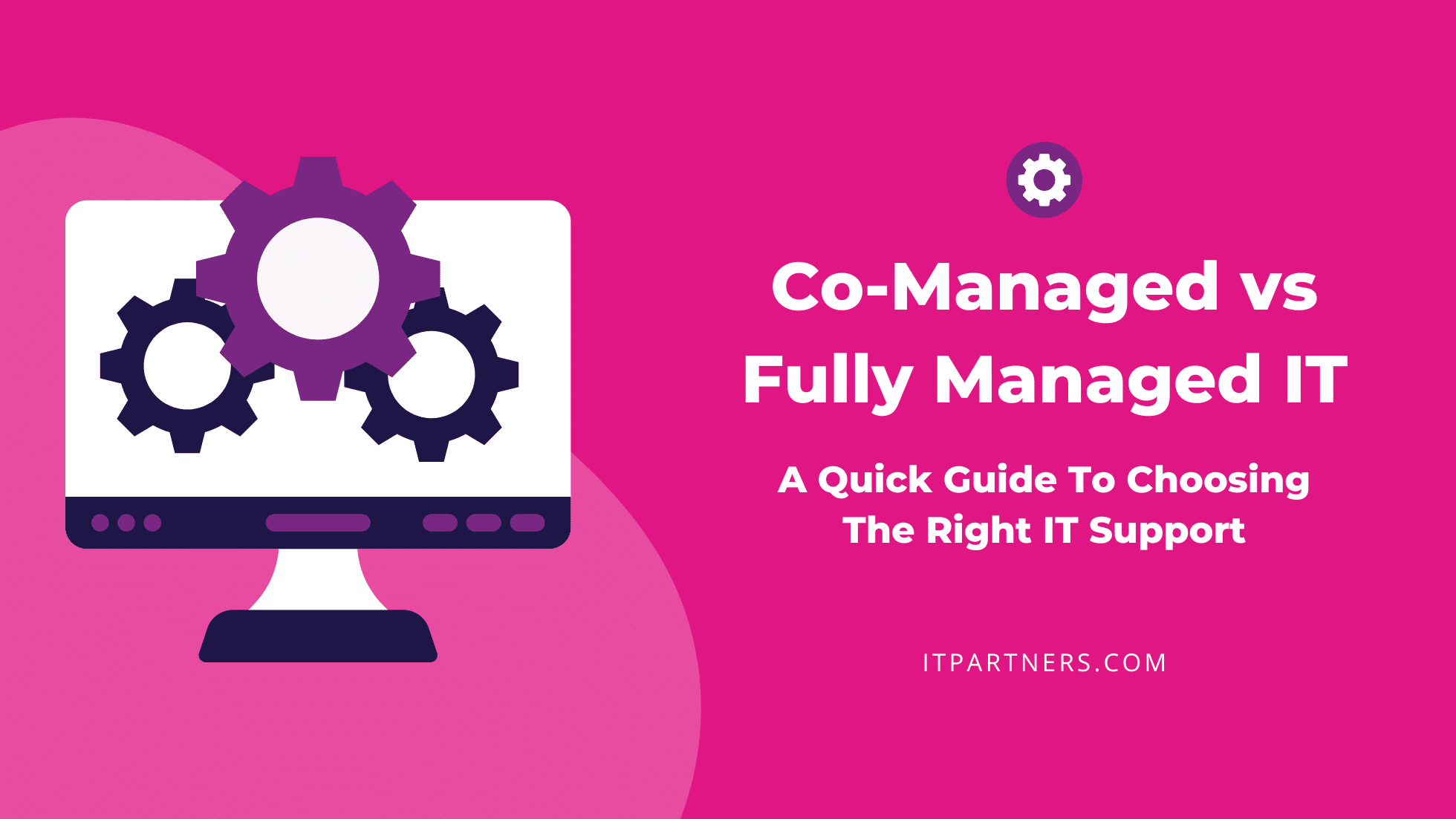Introduction
In a rapidly developing world of digital technology, organizations constantly grapple with the challenge of managing their IT infrastructure. As IT directors search a solution that best fits their unique needs, a common question arises: Is it better to choose fully managed IT services or a co-managed approach?
At ITPartners+, we understand that navigating this decision can feel like finding a needle in a haystack. But fear not! This comprehensive guide is designed to illuminate the differences, advantages, and best use cases for each model.
Understanding Managed IT Services
Before we dive into the deep end, let’s start with the basics – What are Managed IT Services anyway?
Simply put, these are services provided by external experts known as Managed Service Providers (MSPs). Over the past few years, businesses across the spectrum have turned to MSPs to meet the demands of today’s digital economy, particularly with the challenges brought on by recent world events.
Whether it’s adapting to remote work, changing product delivery models, or addressing cybersecurity issues on the fly, MSPs have become the go-to solution for businesses looking to keep pace with the digital economy while also maintaining operational efficiency. Let’s break down the two main types of managed IT services: fully managed and co-managed.

This guide aims to answer all your questions about co-managed IT services, exploring what they are, how they work, who can benefit from them, and the pros and cons of this model.
Fully Managed IT vs. Co-Managed IT: An Overview
In a fully managed IT service model, an MSP takes the reins, managing and deploying all areas of your IT needs. This includes everything from helpdesk support to cybersecurity, system performance, and overall IT infrastructure maintenance. With this model, you get to enjoy the benefits of a highly trained IT team and the expertise of a chief information officer, all without adding extra responsibilities or training requirements to your in-house staff.
On the other hand, a co-managed IT arrangement offers a more collaborative approach. Here, you offload certain aspects of your IT infrastructure to an MSP while retaining control over other parts. This model is like having an extra set of hands to help out where needed, whether that means freeing up your staff to work on strategic projects or letting your MSP fill the gaps with their specialized IT professionals.
Overview: Fully Managed IT
So, when should you consider a fully managed IT service model? Here are a few scenarios:
- You struggle with hiring and retaining IT talent: If finding and keeping high-level IT staff feels like a constant uphill battle, a fully managed IT service can be a game changer. No more hiring headaches and you’ll have access to top-notch talent when you need it.
- You want to focus on your core competencies: If improving your web security or managing an on-site data center isn’t your cup of tea, a fully managed IT service can take those tasks off your plate, allowing you to focus on what you do best.
- You don’t have an IT strategy: If you’re feeling lost in the IT wilderness, a fully managed IT service can provide a compass. MSPs bring high-level knowledge to the table, offering strategies for faster growth and long-term success.
Overview: Co-Managed IT
If the scenarios above don't resonate with you, perhaps a co-managed IT service is more your speed. Here are a few signs this might be the case:
- Your team can’t meet daily IT demands: If your in-house IT team is stretched thin, a co-managed IT model can provide much-needed relief, supporting your team while reducing operational costs and retaining your current staff.
- You need to fill a knowledge or skills gap: Technology has been evolving at an unprecedented pace, and staying on top of the changes can be a challenge. A co-managed IT arrangement gives you access to experienced professionals with a variety of expertise levels, helping to fill those gaps and keep your IT on the cutting edge.
- You have a limited budget: While hiring an entire in-house team can be pricey, so can fully managed IT services. Co-managed IT offers a cost-effective middle ground, providing you with the support you need while adjusting to your budgetary needs.
- If you are looking for a cybersecurity partner: Whether you need a Fast Track to cyber insurance or a partner with a SOC 2 TYPE II audit to help with your security posture, the right Co-managed partner can help provide the support you’ve been looking for.

The Bottom Line
The choice between fully managed and co-managed IT ultimately depends on your unique organization’s needs and circumstances. Whether you’re seeking complete IT support or looking for a partner to supplement your existing team, both models offer invaluable resources to help your business thrive in today’s digital landscape.
Conclusion
Navigating the world of IT management doesn’t have to feel like a high-stakes gamble. With a clear understanding of the benefits and best use cases for both fully managed and co-managed IT services, you can make an informed decision that sets your business up for success. Whether you’re a small business just getting your feet wet in the world of IT or a larger enterprise looking to streamline your IT operations, the right IT solution is out there, and ITPartners+ is here to help you find it.
Have questions? Contact us today to find the best IT management solution for your business. And remember, in the world of IT, you’re not alone. ITPartners+ is here to partner with you every step of the way.



